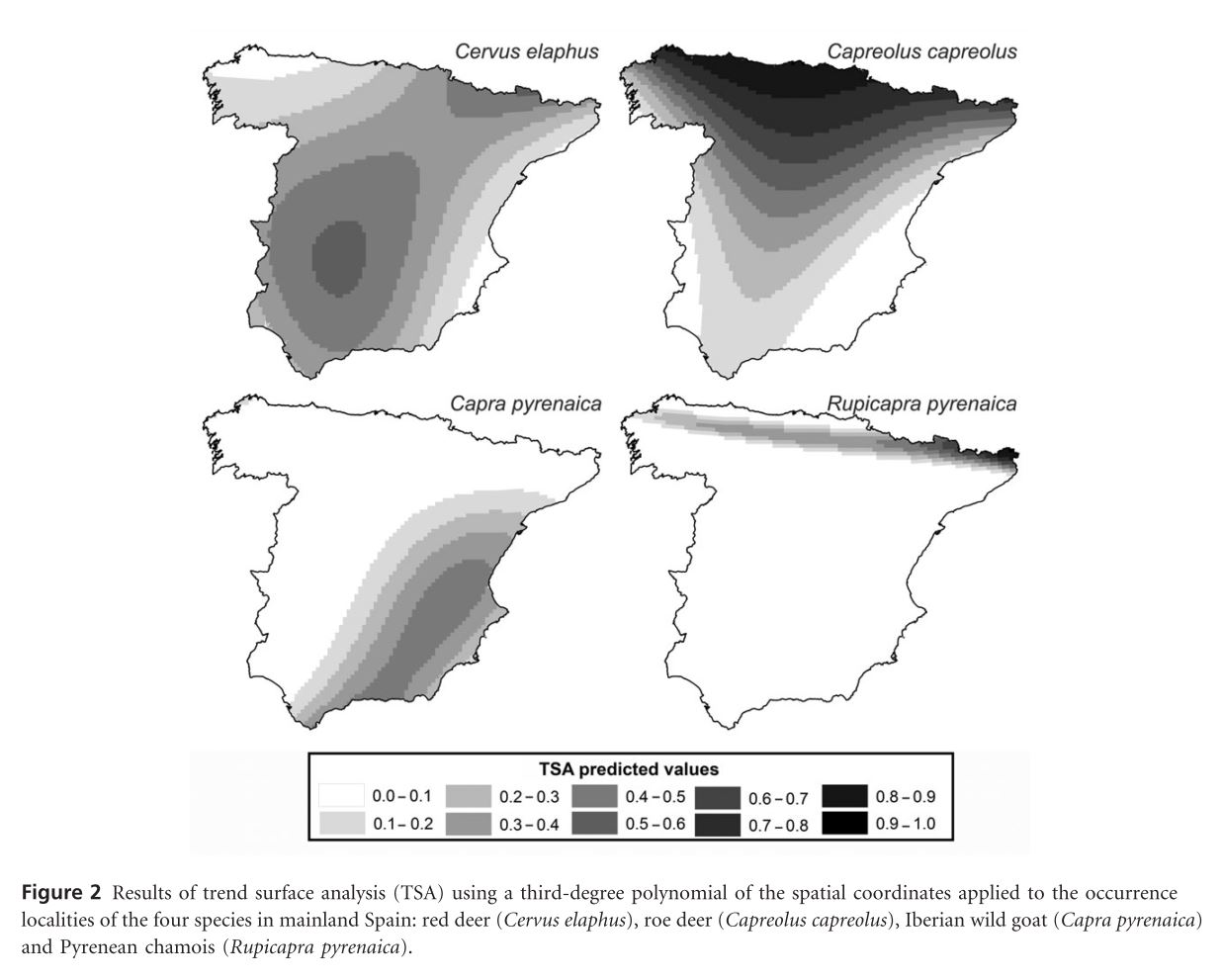Acevedo, P., et al. (2012). “Delimiting the geographical background in species distribution modelling.” Journal of Biogeography 39(8): 1383-1390.
The role of the geographical background (GB) extent is clearly an important one in the field of Species Distribution Models. Notably an increased extent of GB can artificially inflate the perceived discriminatory power of an SDM by adding many uninhabited and unsuitable sites. And if unoccupied but environmentally suitable areas are used for model training then predictive capacity may be reduced. As an alternative to the methods of Barve et al. (2011) the authors propose trend surface analysis (TSA) as a way to determine the GB that maximizes the likelihood that the targeted species is interacting with the environment (i.e. areas that are otherwise accessible). The trial analysis was performed on four native ungulate species in mainland Spain. A third degree TSA was fitted (for processes that occur at the same or a higher spatial scale than the study area) the basic GB (GBLOW) was delimited by selecting all points with the lowest TSA value assigned to a presence or greater. Then the GB was restricted by excluding 1%, 5% and 10% of the presences with the lowest TSA values and extended by including 1%, 5%, and 10% of the absences with the highest TSA values, lower than the value of any presence. Logistic regression models were trained on a 70% random sample fo the data. Predictive performance was assessed on three evaluation data sets: (1) the remaining 30% of the training data within the GB, (2) only evalutation data in GB-10%, (3) using all the localities in GB-10% for all species. TSA results showed broad-scale spatial trends in species distributions. Predictions of all models are quite similar in the core area and highest variability between different models is found when making predictions outside the training data sets. There was a negative association between AUC and GB extent when assessed on core areas and a positive association when evaluated on the training area. There was also a negative association between GB extent and the area of Spain predicted as suitable. Increasing GB produces models that appear better (higher AUC) but that are barely informative. Larger areas of suitability predicted by smaller GBs were also more in accordance with expert opinions. This TSA approach seems to offer a more easily implemented alternative to Barve et al. (2011) for estimating the parts of the landscape to be designated as ‘M’ or the accessible area and could perhaps be used effectively in a broad array of contexts.

